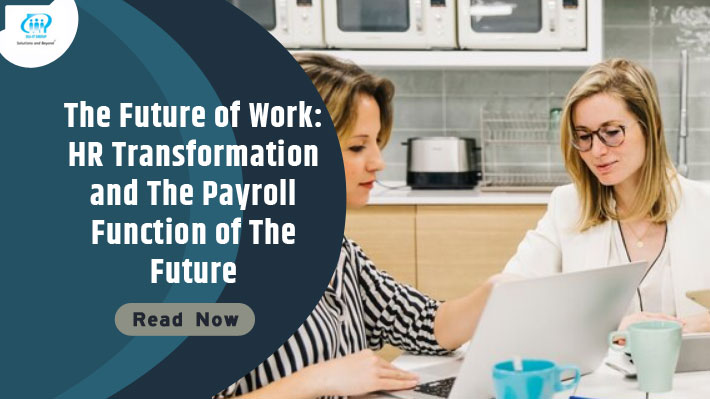The world of HR and payroll is continually advancing, driven by progressions in innovation, changes in work designs, and the requirement for more prominent effectiveness and compliance. As people approach the long haul, it’s pivotal for HR and payroll experts to remain ahead of the bend and grasp the most recent trends and developments.
In this article, the experts will investigate the beat patterns shaping long-term HR software and payroll computer programs, from the expanded use of innovation to the developing significance of worker involvement.
The Rise of Innovation
Utilizing innovation in HR and payroll forms is set to extend within the coming long time. Organizations are turning to cloud-based payroll frameworks to progress proficiency, diminish blunders, and improve openness.
Cloud-based solutions offer a few preferences, counting simple access to payroll information from any area, consistent integration with other HR frameworks, and fetched reserve funds. With the capacity to get to payroll information and perform assignments remotely, cloud-based payroll solutions have become fundamental instruments for organizations of all sizes.
-
Cloud-Based Solutions
Cloud-based payroll frameworks permit HR software and experts to streamline their forms, computerise assignments, and dispense with manual information passage requirements. These frameworks provide a centralised database that can be accessed by authorised staff from any place or time.
Furthermore, cloud-based payroll arrangements offer versatility, permitting organisations to alter their payroll capabilities as their needs advance effortlessly. This adaptability is especially useful for developing businesses that will encounter workforce variances.
-
Automation And AI
Computerisation and fake insights (AI) are revolutionising the HR and payroll scene. AI-powered payroll frameworks can analyse information, distinguish designs, and computerise payroll forms, diminishing the chance of mistakes and sparing time.
For case, AI can classify employees to guarantee they are within the rectified assessment brackets and consequently overhaul payroll records based on changing controls. This disposes of the requirement for manual mediation and minimises the potential for compliance issues.
Also, AI can improve worker involvement by giving self-service choices, such as seeing pay stubs and overhauling individual data.
-
Guaranteeing Compliance
Compliance with payroll controls could be the best need for organisations. Disappointment to comply with charge laws, wage controls, and other lawful necessities can result in severe penalties and harm to a company’s notoriety. In the future, HR and payroll management software will progressively guarantee compliance through built-in highlights and real-time upgrades.
-
Built-In Compliance Highlights
Numerous payroll systems offer built-in highlights to streamline compliance administration that calculate and deduct the correct charges, produce charge shapes, and track wage rates. These highlights assist organisations in remaining up-to-date with changing directions and minimising the chance of compliance blunders.
Organisations can streamline their payroll forms by leveraging payroll management software with built-in compliance highlights while guaranteeing precision and adherence to lawful necessities.
-
Information Security Within the Digital Age
Information security has become a big concern as organisations depend on innovation for HR and payroll forms. Securing sensitive payroll data is vital to avoid information breaches and keep up the trust of workers. In the future, HR and finance payroll will prioritise strong information security measures.
-
Virtual Reality for Improved Preparing and Advancement
In the future, HR divisions will use virtual reality (VR) innovation to revolutionise employee training and improvement programs. VR simulations can give immersive learning encounters, permitting representatives to procure modern aptitudes, hone challenging scenarios, and improve execution.
By consolidating VR into preparing activities, HR can bridge the gap between hypothetical information and down-to-earth application, resulting in more effective and impactful learning results.
-
Blockchain for Secure HR Forms
Blockchain innovation can potentially convert HR operations by guaranteeing secure and straightforward processes. With blockchain, HR divisions can streamline record-keeping, confirm accreditations, and improve information security.
For occasion, blockchain-based stages can encourage consistent confirmation of instructive capabilities and proficient certifications, rearranging enlistment preparation and diminishing regulatory overhead. By leveraging blockchain, HR experts can improve belief, precision, and productivity in their operations.
Conclusion
The long run of HR is, without a doubt, energising, with innovation catalysing change. As organisations explore the advanced age, HR experts must adjust to the changing flow, use rising innovations, and win a people-centric approach.
By grasping AI, information analytics, remote work, and other future HR patterns, organizations can open the complete potential of their workforce and flourish within the rapidly evolving trade scene. The end of HR isn’t almost supplanting the human touch but maybe expanding it with innovation to make it more productive, comprehensive, and locked in the work environment.
The benefits of advanced change incorporate expanded productivity, progressed compliance, enhanced security, and enabling inaccessible work. You’ll discover more by investigating other blogs at DLI-IT online nowadays.
